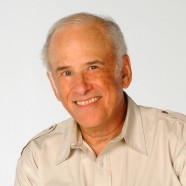
Many people seem to be angry these days about technology taking their jobs and they sometimes look to politicians to help change things. Well, as someone once said, "You can't stop the growth of technology and you can't stop change." After all, we outgrew the need for lamplighters well over a century ago. And politicians from the coal-producing states had better get used to the notion that coal mining, the way it used to be, is a thing of the past as well. But, it's hard to convince people to change when they've been used to a certain way of life for generations.
It's the advancing technology that produces this type of change and it has affected the photography industry as well. But, as old-fashioned jobs are lost, there are many new ones that technology creates. With the photography industry, it's really the photographer's creative "eye" that hasn't really changed all that much. Even though there are new cameras, digital technology and mobile smart phones with cameras built in, the basic need for photographs has only increased, not decreased! The problem is that many photographers have had to re-invent the way they make images and thus conduct their businesses. No job will remain like it used to be for very long, so we must re-think what kinds of jobs we want to do and how we wish to proceed. Also, I've mentioned before that the world has become a very "do-it-yourself" (DIY) place. People can do all sorts of things these days that they couldn't do before without some kind of professional intervention. So, rather than lament a lost job, we need to invent new ones. Or, we need to re-invent different and more modern ways of doing the old jobs and sometimes, we need to become more entrepreneurial and change our business models to keep up with the times!
Photography is one of those fields that is both an art and a science at the same time. There are certain precepts that you must follow if you are going to make a successful image no matter what equipment you use! You still have to use a camera of some sort and you still need to use light to make most photographs. This is where the education part comes in. Learning about light AND new equipment would increase your chances of making a good photograph. I thought about this over thirty years ago when I began teaching at the New School For Social Research in New York City. I could see that there were people back then who were attempting to make photographs without really understanding the properties of light! So, I thought it would be a good idea to begin teaching other people what I was doing in my studio to make the kinds of images I was making.
I knew also, that I wanted to impart my love of photography to others and to help them make better portraits. I am certainly not the only, nor the first photographer who has made this transition. There are many others as well. But, I have developed, over the years, a step-by-step approach to the teaching of studio lighting for portraits which greatly simplifies the application of artificial light in a studio setting.
This "re-invention" was a fairly logical step in my case, because I am a trained teacher. I wound up creating several courses in photography from beginning camera techniques to advanced lighting applications and I often share what I know from my forty years in the photography business, in these blog articles.
But, what is significant about my change and re-invention can be applied to almost any industry. With more people trying to do things themselves, comes more demand for information on how, exactly to do it! So, one way to re-invent oneself in today's employment market is to offer people a way to learn to do what you do!
My workshops offer various techniques in photography and portrait lighting. One of them was about how to use what you know of psychology to make better, more compelling portraits.









